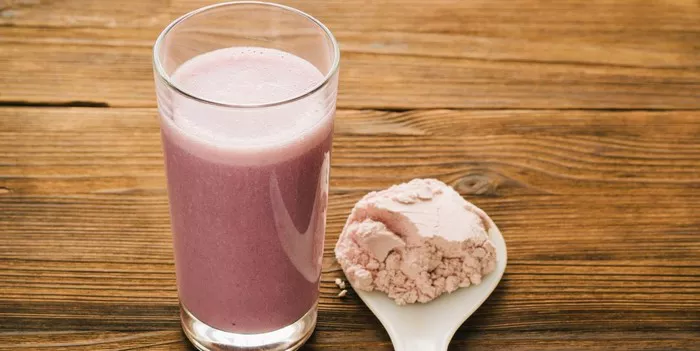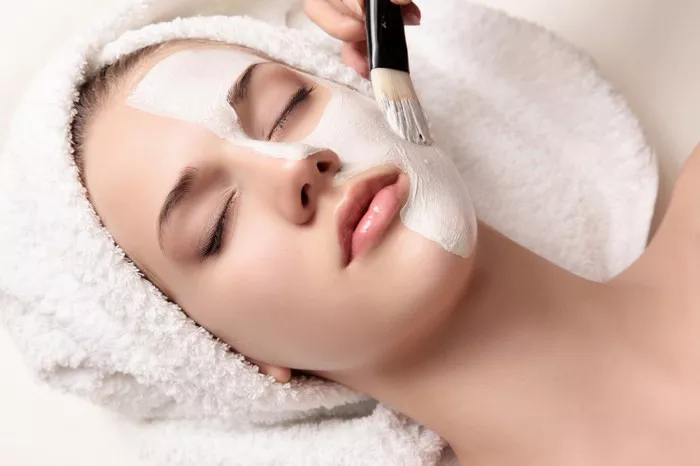Dry skin is one of the most common skincare problems, yet many people don’t understand how or why it develops. At its core, dry skin occurs when the outer layer of the skin, the epidermis, lacks sufficient moisture and natural oils. This makes the skin feel tight, rough, and sometimes itchy or flaky. In severe cases, it may crack or bleed, creating discomfort and an entry point for infection. Dryness can affect your face, hands, legs, and even your scalp or lips—no part of the body is immune.
There are many reasons why your skin might lose its hydration. Environmental conditions like cold weather, dry air, sun exposure, and wind can strip moisture from the skin. Long, hot showers or baths may feel relaxing, but they also weaken the skin’s natural barrier. The soaps and cleansers you use may be too harsh or contain alcohol that evaporates moisture. Even age, genetics, and medical conditions like eczema, psoriasis, or thyroid problems can play a role. Knowing the causes is the first step to protecting and repairing your skin.
What Are the Signs That Your Skin Is Too Dry?
Dry skin doesn’t always announce itself loudly. At first, it might just feel a little rough to the touch. Over time, you may notice flaking, scaling, or redness. If you gently scratch the area, you might see white lines or tiny flakes come off. You may feel tightness, especially after washing your face or stepping out of the shower. In severe cases, dry skin can become itchy, cracked, and even painful, especially around the knuckles, elbows, knees, or heels.
The face is particularly sensitive to dryness. A dull or ashy appearance, visible fine lines, and a lack of smooth texture are all signs that your facial skin needs more moisture. When your skin barrier is compromised, you’re more vulnerable to irritation, inflammation, and even acne. This is because dry skin is more prone to absorbing bacteria and pollutants from the environment. Understanding these signs helps you act early before dryness turns into lasting damage.
How Does the Skin Normally Stay Hydrated?
Your skin has a natural barrier made up of lipids, water, and proteins. This protective layer prevents moisture from escaping and blocks harmful particles from entering. Within this barrier, ceramides, fatty acids, and cholesterol play key roles in keeping the skin hydrated and healthy. Your body also produces sebum—an oily substance that moisturizes and coats the skin surface. Sebum helps trap water and prevents evaporation.
However, many daily habits can damage this barrier. Cleansing too often, using products with harsh ingredients, and exposing your skin to the sun without protection all lead to water loss. When the barrier is weakened, your skin can’t retain the moisture it needs to stay soft and supple. That’s when you start seeing the symptoms of dryness. To heal and prevent this, you must restore and support the natural hydration systems already in place.
Why Moisturizing Isn’t Just an Extra Step
Many people treat moisturizing as an optional step in their skincare routine, but for dry skin, it’s essential. Moisturizers don’t just sit on the surface—they help rebuild the skin barrier and trap water inside your skin. The best moisturizers contain three main types of ingredients: humectants, emollients, and occlusives. Humectants like glycerin and hyaluronic acid attract water into the skin. Emollients such as squalane and shea butter smooth rough patches. Occlusives like petroleum jelly seal everything in.
If you have dry skin, you need to apply moisturizer daily—ideally twice a day. After washing your face or bathing, gently pat your skin dry and apply your moisturizer while your skin is still slightly damp. This helps lock in the water and prevent it from evaporating. Choose products that are fragrance-free, alcohol-free, and formulated specifically for dry or sensitive skin. With consistent care, your skin will feel softer, look healthier, and become more resilient.
How Can You Cleanse Without Making Dryness Worse?
Cleansing is a crucial part of any skincare routine, but for dry skin, it must be done with extra care. Many traditional cleansers strip the skin of its natural oils, leaving it feeling tight and raw. Foaming face washes and soaps that contain sulfates are especially harsh. Instead, use a gentle, hydrating cleanser with a creamy or milky texture. Look for ingredients like ceramides, aloe vera, or oat extract that soothe and protect the skin.
Avoid scrubbing your face or body with rough towels or loofahs, as this can worsen dryness and cause irritation. Wash your face with lukewarm—not hot—water, and limit your showers to ten minutes or less. When you dry off, don’t rub your skin—just pat it gently. Cleansing is meant to remove dirt, makeup, and excess oil, but it should never leave your skin feeling parched. With the right cleanser, you can keep your skin clean and balanced without compromising its moisture.
Can Diet and Hydration Help Improve Dry Skin?
Beautiful skin starts from within. What you eat and drink directly affects the health of your skin. Drinking enough water each day helps your cells stay hydrated and flushes out toxins. If you’re dehydrated, your skin may look dull, rough, or inflamed. Aim for at least eight glasses of water per day, and more if you live in a hot climate or are very active.
Your diet should also include foods rich in essential fatty acids, such as salmon, flaxseeds, walnuts, and avocados. These fats help strengthen the skin barrier and prevent moisture loss. Vitamins A, C, and E are also important—they promote skin regeneration and protect against environmental stress. Adding antioxidant-rich fruits and vegetables to your meals can significantly improve skin texture over time. Supplements like omega-3 capsules may also help if your diet lacks healthy fats.
How Do Weather and Lifestyle Affect Dry Skin?
Seasonal changes can have a dramatic impact on your skin. Cold weather and indoor heating can rob your skin of moisture, leading to chapped lips, flaky cheeks, and cracked hands. During winter, you may need to switch to richer moisturizers and use a humidifier to add moisture to the air. In summer, sun exposure can damage the skin barrier and cause peeling or sensitivity, so wearing SPF becomes even more important.
Other lifestyle habits, like smoking or drinking too much alcohol, can also worsen dry skin. Smoking narrows blood vessels and reduces oxygen supply to your skin, while alcohol dehydrates your entire body. Stress plays a hidden role too—it disrupts hormone levels and can cause flare-ups of skin conditions like eczema. Being mindful of these factors helps you take better control of your skin health year-round.
How Can You Treat Extremely Dry or Flaky Skin?
When dryness becomes severe, your skin may start peeling or developing patches that sting or itch. In such cases, regular moisturizers may not be enough. You’ll need to introduce healing balms or ointments with higher oil content to restore the skin barrier. Ingredients like lanolin, colloidal oatmeal, and dimethicone can soothe irritation and promote healing. For areas like your heels or elbows, apply a thick layer and cover with a bandage or sock overnight.
Exfoliation helps remove dead skin, but be gentle. Use mild chemical exfoliants like lactic acid or low-strength glycolic acid once or twice a week. Avoid harsh scrubs with large granules—they can tear your already fragile skin. If your dry patches persist or worsen, it could be a sign of an underlying condition like eczema, psoriasis, or dermatitis. In these cases, a dermatologist may prescribe steroid creams, medicated ointments, or other therapies to reduce inflammation.
What Are the Best Products for Dry Skin?
The beauty market is full of products claiming to solve dry skin, but not all are effective. The best skincare products for dry skin are those that provide deep hydration and support barrier repair. Look for cleansers labeled “hydrating” or “moisture-rich,” and avoid anything that includes alcohol, fragrance, or sulfates. Serums with hyaluronic acid, panthenol, or niacinamide are excellent additions for boosting hydration.
When it comes to moisturizers, choose thicker creams or ointments over lotions. Ingredients like ceramides, shea butter, petrolatum, and squalane are especially beneficial. For body care, use body washes with added oils and follow up with a nourishing body butter. Lip balms with beeswax or cocoa butter can protect dry lips, while facial oils like rosehip or jojoba oil help seal in moisture. Try patch testing new products first to avoid unexpected irritation.
How Can You Build a Dry Skin-Friendly Routine?
Creating a routine that supports dry skin is all about balance and consistency. Start your morning by cleansing with a gentle hydrating cleanser, followed by a serum with humectants. Seal everything in with a rich moisturizer and don’t forget to apply sunscreen, even in winter. In the evening, remove makeup carefully using an oil-based cleanser, then follow with the same gentle wash. Apply a nourishing night cream or overnight mask to repair your skin while you sleep.
Keep exfoliation to a minimum and avoid overusing active ingredients like retinol or acids. These can be beneficial in small amounts but must be used cautiously on dry skin. If you use them, always buffer with moisturizer and limit them to once or twice a week. Don’t skip your routine, even when you’re tired. Dry skin needs constant attention to stay comfortable and healthy. With patience and the right approach, your skin will gradually become smoother, softer, and naturally radiant.
Final Thoughts
Dry skin may seem like a minor inconvenience, but it can have a big impact on how you feel and look. It affects your skin’s texture, tone, and ability to protect itself from the outside world. Ignoring dry skin can lead to chronic irritation, sensitivity, and even infections. But with consistent care, the right habits, and nourishing products, you can restore your skin’s vitality and enjoy lasting comfort.
You don’t need expensive treatments or complicated routines to improve dry skin. What you need is awareness, gentleness, and consistency. Start with small steps—drink more water, switch to a milder cleanser, apply your moisturizer religiously—and soon, you’ll see the difference. Soft, glowing, resilient skin is possible at any age and in any climate. Give your skin the love it deserves, and it will reward you with radiance in return.
Related Topics
































